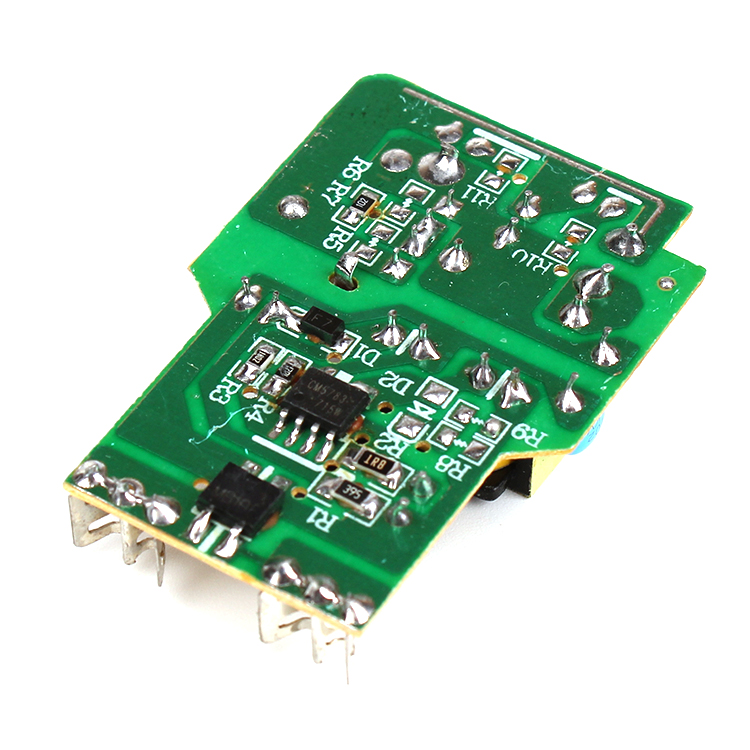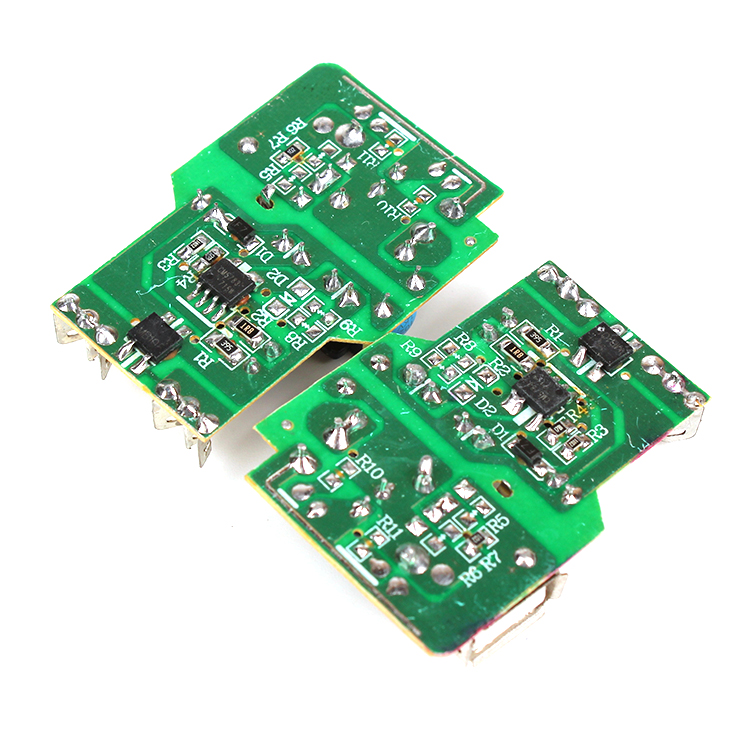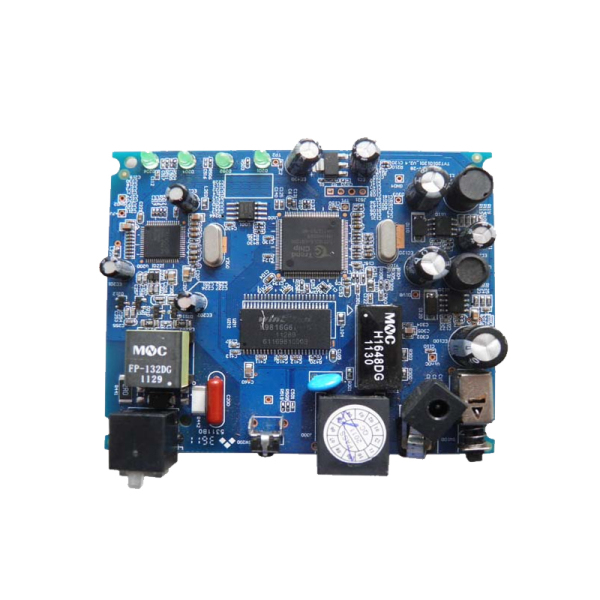4.5G achieved leap-forward development in just two years, and quickly completed the process from concept to mass commercialization. Up to now, there have been 55 commercial 4.5G networks announced worldwide, and it is expected to exceed 60 by the end of the year. Cao Ming, president of Huawei's wireless product line FDD product line, told reporters.
During the 2016 (7th) Global Mobile Broadband Forum, Huawei further released the new concept of 4.5GEvoluTIon based on the existing results of 4.5G, providing “GoGigaâ€, “Go VerTIcal†and “Go CloudificaTIonâ€. "Three core capabilities to help operators develop into B2C, B2B, B2H, B2G diversified businesses and broaden business boundaries."
4.5G leaps and bounds <br> <br> Recognized as the evolution of mobile communication direction, 5G commercial at least until 2020, large-scale commercial real need longer. But at the same time, consumer demand growth will not stagnate, the growth of the Internet of Things market and the digital transformation of traditional industries have also brought new opportunities, operators should not lose opportunities while waiting. As Ding Wei, Huawei's managing director and president of products and solutions, said, "Rome is not built in one day, and 5G can't wait for the arrival of 2020. We can't WaiTItHappen, but MakeIt Happen."
In this context, 4.5G came into being. In October 2014, Huawei took the lead in proposing the 4.5G concept in the industry; on February 24, 2015, it released the 4.5G business blueprint in London, UK and demonstrated the application of 4.5G in the industry to fully explain the development prospects and directions of 4.5G; 2015 In October, 3GPP officially decided to name the new 4.5G standard LTE-Advanced Pro at the 35th meeting of PCG; in December 2015, Telia Sonera and Huawei released the world's first in Oslo, Norway after 6 years of 4G commercialization. A 4.5G commercial network has a peak rate of 1 Gbps.
During the 2016 Mobile World Congress in February this year, the company held a 4.5G strategic cooperation launching ceremony with the world's leading operators such as Norway's Telia Sonera, Hong Kong HKT, South Korea's LGUplus, Poland's P4 and Kuwait VIVA, symbolizing 4.5G. The official launch of the global scale of commercial use.
Cao Ming said that Huawei has deployed 55 4.5G commercial networks around the world, which is quite close to the 60 expected, and there is no problem in achieving the goal. At the same time, the 4.5G industry chain has been further expanded and expanded. Mainstream chips and terminal manufacturers have supported it. The other two mainstream equipment suppliers in the industry have also joined the 4.5G camp, which has reached an agreement on ecology and cognition.
He cited Turkey as an example. The three major operators, Turkcell, Turk Telekom and Vodafone Turkey, launched the 4.5G commercial deployment in April this year, making the country the first in the world to achieve 4.5G nationwide. Sexually covered countries have developed more than 20 million 4.5G users within three months. Among them, Turkey Mobile released data traffic through commercial 4.5G, spurred data service applications, and earnings rose by 36%.
Investing 4.5G is investing 5G
The generation of a generation technology generally takes ten years, just as 2G to 3G has GPRS, 3G to 4G has HSPA/HSPA+/DC-HSPA+, “any operator that needs to improve network capacity, improve coverage, and enhance user experience, There is a demand for 4.5G."
Investing in 4.5G means investing 5G. Cao Ming pointed out that on the one hand, from browsing images to watching videos, watching SD video, watching HD or even 4K video, consumers' pursuit of experience is difficult to bear in traditional 4G networks, especially AR/VR as the next disruptive. Business, the requirements of the network are beyond imagination, if the operators just wait for the opportunity to miss the opportunity; from another perspective, the bandwidth of 4G to 5G will be increased by a hundred times, the user habits will not be overnight, through the 4.5G operator It is able to gradually promote business and market maturity while meeting real-world needs.
5G not only serves people, but also covers the connection of people and things, the connection of things and things, the objects and modes of service have changed greatly, and it needs to explore and innovate in many aspects such as technology, business model and cross-industry cooperation. These take time. The inclusion of NB-IoT in 4.5G is the basis for early preparation and application of the extensive deployment and application of mobile communication technology in the Internet of Things.
 At the end of the 1990s when many build-up printed circuit board solutions were proposed, build-up printed circuit boards were officially put into practical use in large numbers until now. It is important to develop a robust test strategy for large, high-density (HDI PCB) printed circuit board assembly (PCBA) to ensure compliance and functionality with the design. In addition to the establishment and testing of these complex assemblies, the money invested in Electronic Components alone can be very high-when a unit is finally tested, it can reach $25,000. Due to such high costs, finding and repairing assembly problems is now an even more important step than in the past.
At the end of the 1990s when many build-up printed circuit board solutions were proposed, build-up printed circuit boards were officially put into practical use in large numbers until now. It is important to develop a robust test strategy for large, high-density (HDI PCB) printed circuit board assembly (PCBA) to ensure compliance and functionality with the design. In addition to the establishment and testing of these complex assemblies, the money invested in Electronic Components alone can be very high-when a unit is finally tested, it can reach $25,000. Due to such high costs, finding and repairing assembly problems is now an even more important step than in the past.
 Printed circuit board, also known as printed circuit board, printed circuit board, often uses the English abbreviation PCB, is an important electronic component, is the support of Electronic Components, and is the provider of Electronic Components circuit connection. Because it is made using electronic printing technology, it is called a "printed" circuit board. Simply put, PCBA can be a series of technological processes consisting of SMT chip processing, DIP plug-in processing and PCBA testing, referred to as PCBA.
Printed circuit board, also known as printed circuit board, printed circuit board, often uses the English abbreviation PCB, is an important electronic component, is the support of Electronic Components, and is the provider of Electronic Components circuit connection. Because it is made using electronic printing technology, it is called a "printed" circuit board. Simply put, PCBA can be a series of technological processes consisting of SMT chip processing, DIP plug-in processing and PCBA testing, referred to as PCBA.
 Among them, SMT chip processing is simply to perform electronic components on the bare PCB board. The PCB board is processed by solder paste printing, component placement, reflow soldering, hand soldering and AOI inspection, quality inspection by the quality department, etc. Process. Then proceed to DIP plug-in processing. DIP plug-in processing refers to plug-in processing of electronic components that cannot be mounted, and pass wave soldering, cut foot quality inspection and other processes. So far, most of the PCBA processing has been completed. Then it needs to be tested and the program is burned. Complete the entire processing process.
Among them, SMT chip processing is simply to perform electronic components on the bare PCB board. The PCB board is processed by solder paste printing, component placement, reflow soldering, hand soldering and AOI inspection, quality inspection by the quality department, etc. Process. Then proceed to DIP plug-in processing. DIP plug-in processing refers to plug-in processing of electronic components that cannot be mounted, and pass wave soldering, cut foot quality inspection and other processes. So far, most of the PCBA processing has been completed. Then it needs to be tested and the program is burned. Complete the entire processing process.
Huawei's wireless product line FDD product line president Cao Ming
“In the present and win in the future, 4.5G is the right time for operators and end users.†He pointed out that the reason why 4.5G can become a wave of global spread is largely benefited. It takes into account the short-term interests and long-term interests of operators, and builds a bridge between 4G and 5G. The technology pioneered by Huawei has brought higher bandwidth, lower latency and more connections, which not only meets the increasing business demands of operators, but also prepares for the future of 5G commercial opportunities.During the 2016 (7th) Global Mobile Broadband Forum, Huawei further released the new concept of 4.5GEvoluTIon based on the existing results of 4.5G, providing “GoGigaâ€, “Go VerTIcal†and “Go CloudificaTIonâ€. "Three core capabilities to help operators develop into B2C, B2B, B2H, B2G diversified businesses and broaden business boundaries."
4.5G leaps and bounds <br> <br> Recognized as the evolution of mobile communication direction, 5G commercial at least until 2020, large-scale commercial real need longer. But at the same time, consumer demand growth will not stagnate, the growth of the Internet of Things market and the digital transformation of traditional industries have also brought new opportunities, operators should not lose opportunities while waiting. As Ding Wei, Huawei's managing director and president of products and solutions, said, "Rome is not built in one day, and 5G can't wait for the arrival of 2020. We can't WaiTItHappen, but MakeIt Happen."
In this context, 4.5G came into being. In October 2014, Huawei took the lead in proposing the 4.5G concept in the industry; on February 24, 2015, it released the 4.5G business blueprint in London, UK and demonstrated the application of 4.5G in the industry to fully explain the development prospects and directions of 4.5G; 2015 In October, 3GPP officially decided to name the new 4.5G standard LTE-Advanced Pro at the 35th meeting of PCG; in December 2015, Telia Sonera and Huawei released the world's first in Oslo, Norway after 6 years of 4G commercialization. A 4.5G commercial network has a peak rate of 1 Gbps.
During the 2016 Mobile World Congress in February this year, the company held a 4.5G strategic cooperation launching ceremony with the world's leading operators such as Norway's Telia Sonera, Hong Kong HKT, South Korea's LGUplus, Poland's P4 and Kuwait VIVA, symbolizing 4.5G. The official launch of the global scale of commercial use.
Cao Ming said that Huawei has deployed 55 4.5G commercial networks around the world, which is quite close to the 60 expected, and there is no problem in achieving the goal. At the same time, the 4.5G industry chain has been further expanded and expanded. Mainstream chips and terminal manufacturers have supported it. The other two mainstream equipment suppliers in the industry have also joined the 4.5G camp, which has reached an agreement on ecology and cognition.
He cited Turkey as an example. The three major operators, Turkcell, Turk Telekom and Vodafone Turkey, launched the 4.5G commercial deployment in April this year, making the country the first in the world to achieve 4.5G nationwide. Sexually covered countries have developed more than 20 million 4.5G users within three months. Among them, Turkey Mobile released data traffic through commercial 4.5G, spurred data service applications, and earnings rose by 36%.
Investing 4.5G is investing 5G
The generation of a generation technology generally takes ten years, just as 2G to 3G has GPRS, 3G to 4G has HSPA/HSPA+/DC-HSPA+, “any operator that needs to improve network capacity, improve coverage, and enhance user experience, There is a demand for 4.5G."
Investing in 4.5G means investing 5G. Cao Ming pointed out that on the one hand, from browsing images to watching videos, watching SD video, watching HD or even 4K video, consumers' pursuit of experience is difficult to bear in traditional 4G networks, especially AR/VR as the next disruptive. Business, the requirements of the network are beyond imagination, if the operators just wait for the opportunity to miss the opportunity; from another perspective, the bandwidth of 4G to 5G will be increased by a hundred times, the user habits will not be overnight, through the 4.5G operator It is able to gradually promote business and market maturity while meeting real-world needs.
5G not only serves people, but also covers the connection of people and things, the connection of things and things, the objects and modes of service have changed greatly, and it needs to explore and innovate in many aspects such as technology, business model and cross-industry cooperation. These take time. The inclusion of NB-IoT in 4.5G is the basis for early preparation and application of the extensive deployment and application of mobile communication technology in the Internet of Things.
What does PCBA stand for?
PCBA is the abbreviation of Printed Circuit Board + Assembly in English, which means that the empty PCB board passes through the SMT assembly or the entire manufacturing process of the DIP plug-in, referred to as PCBA. This is a commonly used wording in China, while the standard wording in Europe and the United States is PCB`A with the addition of "`", which is called the official idiom.



Pcba Manufacturing,Pcba Smt Service,Assembly Populated Pcb,Pcb Populated Service
HAODA ELECTRONIC CO.,LIMITED , https://www.pcbhdi.com